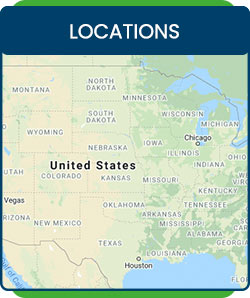Nat Geo “Sleepless in America”


National Geographic’s “Sleepless in America” exposes the crucial need for sleep and the shocking life-threatening consequences of its absence.
This past Sunday, National Geographic Channel aired “Sleepless in America,” a new 2-hour documentary that explores the importance of sleep in an increasingly sleepless society. The program was produced through the combined efforts of National Geographic, The Public Good Projects and the National Institutes of Health (NIH). Scientific data and personal accounts are used throughout the documentary to appeal to Americans to get the necessary 7-9 hours of sleep needed each night. The documentary covers a range of topics from drowsy driving to sleep disorders to the myriad of health problems associated with poor sleep. The takeaway point is this: ours is a severely sleep-deprived country, and the repercussions of this compounded sleeplessness may be fatal.
NIH researchers have helped to shed light on a variety of health problems, from obesity to depression to heart disease, which can stem from chronic sleep problems. One such disorder is Obstructive Sleep Apnea (OSA), a condition impacting millions of U.S. adults. Unfortunately, according to the NIH, up to 80% of these adults don’t even know they are affected.
OSA is a condition characterized by complete and partial airway obstructions, which can occur when the tongue and muscles relax during sleep, the lower jaw falls back toward the throat or the airway becomes blocked. A typical sequence of OSA occurs when a person stops snoring and is silent for seconds or minutes. The brain may cause the body to jerk in an attempt to wake the sleeper so breathing will resume. The silence may end with a loud snort, cough or gasp. This causes the sleeper to wake briefly and begin breathing. Once asleep again, the muscles relax and the airway becomes blocked, cutting off the airway again. This cycle can occur hundreds of times per night.
Additional warning signs of OSA may include headaches, high blood pressure, daytime sleepiness, insomnia, diabetes, depression and more. If left untreated, OSA may lead to heart attack, stroke and death.
Thankfully, doctors like those at the Koala® Center For Sleep & TMJ Disorders are working to educate Americans on sleep disorders like OSA and to provide non-invasive treatment measures that can improve side effects and symptoms for patients struggling with sleep apnea.
If you are experiencing symptoms of OSA, consider asking your physician for a sleep study, which can determine whether or not you have OSA and, if so, how severe it is.
Treatment options include lifestyle changes, surgery, Continuous Positive Airway Pressure (CPAP) and Oral Appliance Therapy. While CPAP is one of the most common treatments for OSA, Oral Appliance Therapy has proven to be an effective, scientifically-based treatment alternative that patients may find more comfortable and easier to use. The purpose of the appliance is to hold the jaw in a position that allows the airway to remain as open and firm as possible during sleep. Oral appliances are similar to athletic mouth guards but less bulky and completely non-invasive. Oral sleep appliances are covered by most medical insurance plans and Medicare.
To find a Koala® Center For Sleep & TMJ Disorders dentist near you click here.

Additional Services You May Need
▸ KoalaKIDZzz®
▸ Sleep Apnea
▸ Snoring
▸ TMJ Disorder
▸ Fatigue
▸ Sleep Disorders
▸ Weight Loss
▸ CPAP Alternative
▸ Oral Appliances




